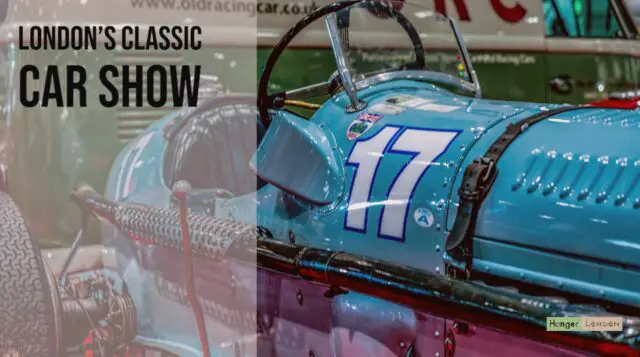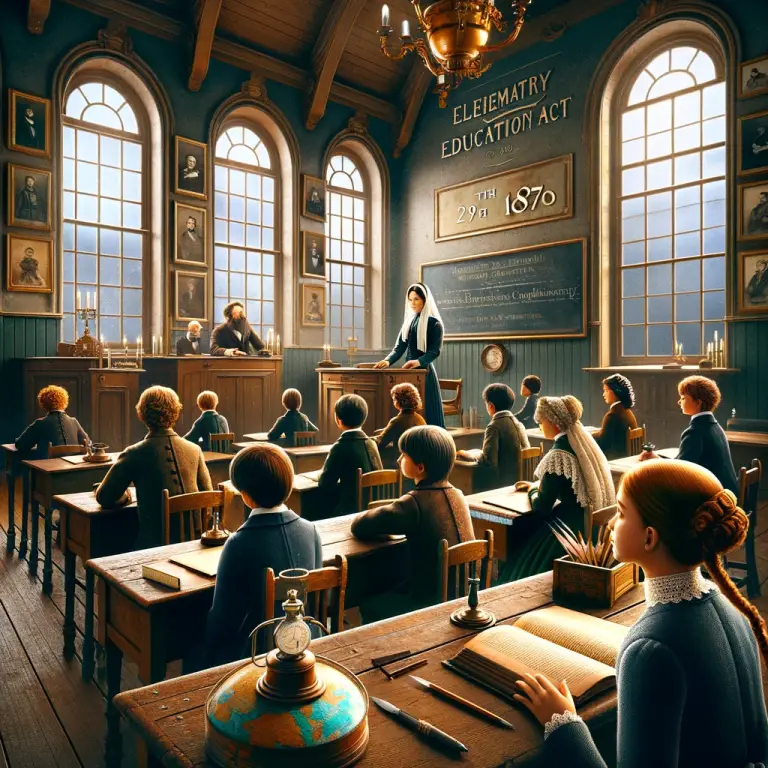Origins of the classic car show in London
The London Classic Car Show has the look and feel of a motoring event that has been running since the 1960s, but in fact, no. The classic car event started in 2015 and has done well to rapidly grow in size and popularity ever since. In 2018, the show ran across 4 days, occupying the a large part of the Excel Arena. Recreating a classic californian feel drag strip as the centre piece, where 60 chosen classic cars rolled down the car version of the catwalk.
Passion for Vintage Cars: The Birth of Classic Car Shows
The world of classic cars is a realm where passion and nostalgia intertwine, creating a fervor that transcends time. The origins of the classic car show can be traced back to the ardor of car enthusiasts who recognized the intrinsic value of preserving and celebrating vintage automobiles. The appreciation for the historical and artistic significance of older cars ignited the spark that would eventually lead to the establishment of dedicated events, showcasing these automotive treasures to an eager audience.
Birth of Car Clubs: Creating Communities of Enthusiasts
Central to the inception of classic car shows were the formation of car clubs—dynamic communities forged by individuals united by a shared love for classic cars. These clubs played a pivotal role, providing a platform for collectors, restorers, and aficionados to exhibit their prized vehicles and connect with fellow enthusiasts who resonated with their passion. The camaraderie that developed within these clubs became the heartbeat of the classic car show movement.
Showcasing Automotive History: A Journey Through Time
As the appreciation for vintage cars grew, the concept of experiencing automotive history firsthand gained momentum. Classic car shows emerged as dynamic stages, allowing attendees to embark on a journey through time. These events provided a captivating platform to showcase an array of vehicles spanning various eras, each vehicle a chapter in the captivating narrative of automotive evolution. From the elegant curves of the early 20th century to the bold lines of mid-century marvels, each car recounted a tale of innovation and engineering prowess.
Displaying Elegance and Innovation: Captivating the Senses
Classic car shows are more than mere gatherings; they are immersive experiences that engage the senses and capture hearts. Each car on display is a testament to the elegance, innovation, and craftsmanship of bygone eras. Attendees have the opportunity to delve into the intricate details of these vehicles, appreciating the labor of love that went into their creation. The events evoke a sense of wonder, as attendees become privy to the stories behind each car’s design, embodying a deep-rooted connection to automotive heritage.
Cultural and Historical Impact: Beyond Automobiles
The classic car show phenomenon reaches beyond the realm of automobiles, becoming intertwined with cultural and historical appreciation. These events serve as lenses through which attendees can explore the social and technological advancements that shaped automotive development over the decades. The classic cars become conduits through which larger narratives of society, aesthetics, and technology are examined, enriching our understanding of history.
Growing Popularity and Influence: A Global Movement
From its modest beginnings, the classic car show movement swiftly gained momentum and popularity. Enthusiasts, collectors, and the public at large found themselves drawn to these events, enamored by the opportunity to witness automotive history come to life. As interest continued to swell, classic car shows evolved, becoming more comprehensive and elaborate, attracting participants and attendees from around the world. The movement transcended borders, uniting individuals under a shared appreciation for the past on wheels.
London’s Role in the Movement: Celebrating Automotive Heritage
London, a city renowned for its culture, history, and innovation, naturally emerged as a significant hub for hosting classic car shows. The city’s rich automotive heritage, coupled with its status as an international center, made it an ideal setting to celebrate the legacy of vintage cars. From elegant park settings to historic venues, London’s landscapes become stages upon which the beauty of classic cars is unveiled, captivating both locals and global enthusiasts alike.
As the classic car show phenomenon persists, it continues to encapsulate the passion, history, and allure of vintage automobiles. Each gathering pays homage to the pioneers of automotive design and engineering while inviting new generations to become part of a timeless journey. Through the lens of these shows, we not only admire the vehicles but also recognize our shared humanity and the indomitable spirit that drives us forward.
The Historic Legacy of the Earls Court Motor Show: A Showcase of Automotive Excellence
In the annals of automotive history, few events have left as indelible a mark as the iconic Earls Court Motor Show. With its grandeur, innovation, and influence, the show became a veritable institution in the world of automobiles. From its inception to its triumphant legacy, the Earls Court Motor Show captivated enthusiasts, celebrated innovation, and left an enduring impact on the automotive landscape.
A Grand Inauguration and Evolution:
The story of the Earls Court Motor Show began in 1903 when the Royal Agricultural Hall in Islington hosted the very first display of automobiles. However, it was in 1937 that the show found its true home at the prestigious Earls Court Exhibition Centre in London. This grand transition marked the beginning of an era characterized by opulent showcases, breathtaking displays, and the convergence of cutting-edge automotive engineering.
The Golden Era of Automobiles:
The show quickly gained a reputation for showcasing the epitome of automotive luxury and innovation. During the 1950s and 1960s, the Earls Court Motor Show became a stage where manufacturers vied to unveil their most groundbreaking designs. From the sleek curves of British roadsters to the robust elegance of American muscle cars, the show provided an exclusive glimpse into the golden era of automobile design and craftsmanship.
Setting the Stage for Innovation:
One of the defining features of the Earls Court Motor Show was its role as a catalyst for innovation. It was here that automotive manufacturers unveiled technological advancements that would shape the industry. The British Motor Corporation (BMC), for instance, introduced the world to the revolutionary Mini in 1959—a compact car that redefined urban mobility and left an indelible mark on design philosophy.
Extravagance and Spectacle:
The show wasn’t just about automobiles; it was a theatrical experience that captured the imagination of attendees. Elaborate displays, dramatic lighting, and meticulously crafted sets transformed the exhibition hall into a wonderland of automotive splendor. Manufacturers spared no expense in creating immersive environments that showcased their vehicles in the most captivating and imaginative ways.
Influencing Pop Culture:
Beyond the realm of engineering and design, the Earls Court Motor Show infiltrated popular culture. The event became a focal point for celebrities, dignitaries, and enthusiasts alike. The allure of the show extended beyond car aficionados, leaving a lasting impact on society at large. Iconic vehicles introduced at the show became cultural touchstones, representing not just transportation, but symbols of aspiration and innovation.
The Legacy Lives On:
The legacy of the Earls Court Motor Show lives on in the memories of those fortunate enough to attend its illustrious editions. Although the show eventually bid farewell in 1976, its influence continues to reverberate through the corridors of automotive history. The spirit of innovation and spectacle that defined the show remains an inspiration for contemporary automotive exhibitions, reminding us of the profound impact a well-executed showcase can have on an industry.
Preserving History: The Importance of Classic Car Restoration
The world of classic cars is an exciting one, full of charm and nostalgia. These vehicles represent a bygone era, a time when automobiles were more than just a means of transportation; they were a status symbol and a reflection of one’s personal style. Despite their age, classic cars continue to captivate enthusiasts around the world, and their restoration is an essential part of preserving history.
The London Classic Car Show is an annual event that celebrates the world of classic cars. It’s a four-day extravaganza that brings together car enthusiasts, collectors, and restorers from around the world to celebrate the timeless appeal of these vehicles. The show features an extensive collection of classic cars from different eras, each one a testament to the skill and craftsmanship of its time.
Restoration is an integral part of classic car preservation, and the London Classic Car Show showcases some of the best examples of this art form. Restoring a classic car is a meticulous process that requires attention to detail, a deep knowledge of the vehicle, and a passion for the craft. Each restoration project is unique, with its challenges and rewards.
Restoration involves the careful removal of all the components of a vehicle, from the engine to the bodywork. These parts are then cleaned, refurbished, and repaired as necessary. In some cases, parts that are beyond repair must be replaced with authentic pieces from the same era. Once all the components are restored, they are reassembled to create a vehicle that looks and performs like new.
The restoration process is not just about restoring a vehicle’s appearance; it’s also about preserving its history. Classic cars are part of our heritage, and restoring them helps us to understand and appreciate the past. Through restoration, we can learn about the design and engineering of vehicles from different eras and the social and cultural context in which they were created.
The London Classic Car Show is an excellent example of how restoration can help preserve history. It showcases the beauty and elegance of classic cars and demonstrates the skill and dedication required to restore them. By bringing together enthusiasts and restorers from around the world, the show celebrates the enduring appeal of these vehicles and their contribution to our collective heritage.
Appreciating the Design of Classic Cars at the London Classic Car Show
Classic cars have a certain allure that draws people in. The design, the craftsmanship, and the history behind them are all part of their charm. The London Classic Car Show is a perfect place to appreciate these classic automobiles and the design behind them.
As you enter the show, you are immediately transported back in time. The sound of engines revving and the sight of polished metal and chrome bring a sense of excitement and anticipation. The design of classic cars is unique and stands out from modern cars. They have a certain elegance and style that is unmatched.
One of the things that make classic cars so special is the attention to detail in their design. From the shape of the body to the placement of the headlights, every aspect of the car was carefully considered. Classic cars have curves and lines that flow together seamlessly, creating a sense of harmony and balance.
The London Classic Car Show features a wide range of classic cars, from vintage models to modern classics. One of the standout models at the show is the Jaguar E-Type. This car is considered one of the most beautiful cars ever made, with its long, sleek body and iconic curves.
Another classic car that draws attention is the Porsche 911. This car has been in production for over 50 years and is a classic design that has stood the test of time. Its simple and elegant lines make it instantly recognizable, and it has become a symbol of the Porsche brand.
The Aston Martin DB5 is another classic car that is on display at the show. This car is famous for its appearance in the James Bond films, and its sleek design and powerful engine make it a true classic.
The London Classic Car Show is not just about appreciating classic cars. It is also an opportunity to learn about the history behind these automobiles and the people who made them. The show features talks and presentations on various topics related to classic cars, from restoration to racing.
BMW Z3 the next classic icon
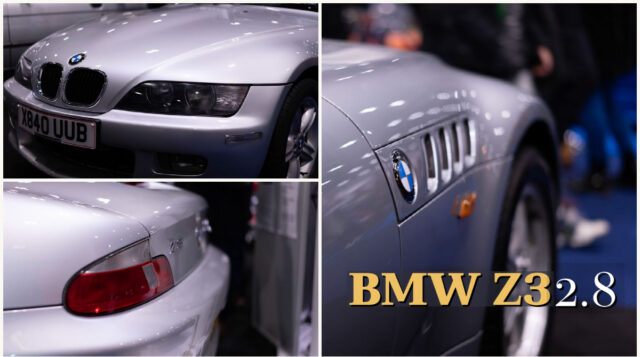
I do have a soft spot for the BMW Z3 2.8, because I have one. The first time I set eyes on the shark grills, that front nose side profile, I thought what a classic in the making. BMW does have a reputation of rotating their model line up and just some times you think, how can they replace that shape with another one, and a few years on you see the decision was probably spot on. Not so with the Z3, there was no direct model shape update, not including the subtle facelift change here, they went on to bring out the Z4 instead. Will the German maker return to the Z3 heritage in the future? That would be an interesting design exercise to work on that style shape.
My Silver shark, looks not too dissimilar to the model above captured at the London Classic Car show, powered hood, a gearbox tunnel that would probably give a Landover forward control a run for its money, in terms of size. Great view forward over a gentle bulging hood. Looks great with the hood up or down. One wonders how desirable these machines would have been if they put in the 4.4V8. One for the mid-crisis-lifers, it would be ‘shall I buy that Ducati’, ‘Harley Davidsons’ or that ‘V8 Z3’, we can only dream. The Z3M does indeed slot in quite nicely.
If your a fan of the Top Gear Specials, the one where James drives the Z3, the Middle East Special. I was glued to that episode, just how great it looked in the dust on a good long cruise.
1959 Maserati Modena
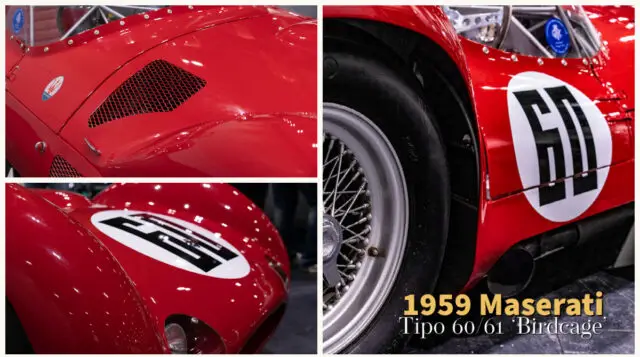
Maserati Tipo 60 'Birdcage'
1959, Modena, the scene was set for Stirling Moss to drive the Maserati Tipo 60 to its first win, a first of many for a car nicknamed the Birdcage. Towards the end of the 1950s Maserati assigned engineer Giulio Alfieri to come up with the design for an all-new race car. Out of this design work, a tubed chassis car was developed, using around 200 steel tubes, forming cage-like structure, not too dissimilar to a birdcage, hence the nickname of the new car ‘birdcage’
The chassis was twinned with a 2-litre, 4-cylinder engine with twin weber carburettors, the whole engine unit sat low in the frame to give the car quite an exceptionally low centre of gravity. With a weight of 570kg and an engine that produced 200hp, the car could shift. In comparison, the current weight of a Formula 1 car is 660 kg.
Stirling Moss was handed the keys and test drove the first car around the test track in Italy’s Aeroautodromo at Modena and in Germany at the Nürburgring. The tests run highlighted issues with the birdcage structure’s inherent weakness of being liable to fracture. An engineering solution was applied by Giulio to fix the issue.
The Maserati Tipo 61
Maserati updated the power unit in the Tipo 60 to just under 3 litres bringing the weight up to 600kg with a power output of 250hp. During the Le Mans, 24 Hour race a Tipo 61 clocked the track speed record of the time for an under the 3-litre class of 270 km per hour.
The final year of manufacture is February 1961.
A 2013 Auction listing has one of these beautiful cars sold at just over 2 million dollars.
Jensen Interceptor

I have had the privilege of riding in a Jensen Interceptor, 6 litre V8. A heavy car that sat on the road like it owned the tarmac beneath its tyres. Impressive cruiser. Bonnet big enough to land a small helicopter and a one off rear hatch lid that the likes have not been seen a 1960s science movie first created the idea of a dome on a car.
If I recall 12miles to the gallon or if driven with the touch of a ballet dancers tap shoe, maybe 14. Is there a better place for the destination of so much crude oil than in a V8 powered Jensen Interceptor. I guess there is always the thought of putting in an electric motor. Jensen made other cars but it was to be the Interceptor as its swung song.
There was a 7.4 litre model to counter balance the loss of power through emission restrictions and of course the ground breaking 4 wheel drive FF model. It was the 6 Litre Jensen the model I remembered, a labour of love that if it could go wrong it unfortunately did. The only thing that was guaranteed, was the need to drink fuel and the grin on the face when the Interceptor was running at a cantor.
Range Rover Classic
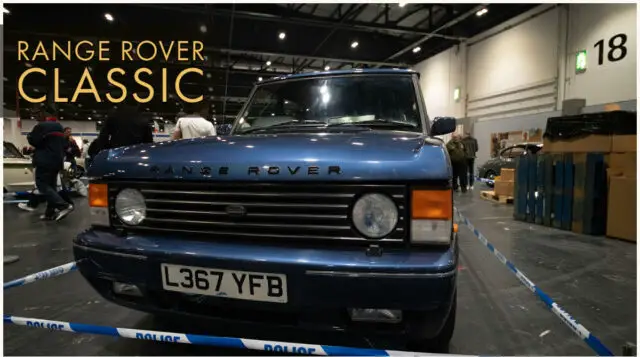
The Range Rover Classic, or if you’re of a certain age, simply a Range Rover. Back when Land Rover designed a groundbreaking car at the turn of the 1970s that would go and define a whole genre of car, and then decided to leave the design as is for the next 25 years. Other than adding 2 additional doors, making the grill go horizontal, and planting wood and leather inside.
If you have ever sat in a Range Rover, there is one thing that strikes you, your line of sight is almost at the top of the window. It’s like sitting on the umpire’s chair at Wimbledon. It is someplace to sit. These days there are bigger cars but there is something quite unique still about the Range Rover Classic.
For a factory rebuilt 2 door fetching upwards of £135,000 the after-market for quality early 1970 examples is through the roof. Then there are the after-marked customised Range Rovers like the Chieftain, pictured here.
The Range Rover Classic, or if you’re of a certain age, simply a Range Rover. Back when Land Rover designed a groundbreaking car at the turn of the 1970s that would go and define a whole genre of car, and then decided to leave the design as is for the next 25 years. Other than adding 2 additional doors, making the grill go horizontal, and planting wood and leather inside.
If you have ever sat in a Range Rover, there is one thing that strikes you, your line of sight is almost at the top of the window. It’s like sitting on the umpire’s chair at Wimbledon. It is someplace to sit. These days there are bigger cars but there is something quite unique still about the Range Rover Classic.
For a factory rebuilt 2 door fetching upwards of £135,000 the after-market for quality early 1970 examples is through the roof. Then there are the after-marked customised Range Rovers like the Chieftain, pictured here.
Unpacking the Range Rover Classic: A Look at Its Distinctive Design Elements
The Range Rover Classic, introduced in 1970, is one of the most iconic and enduring luxury SUVs ever produced. Its rugged yet refined design, combined with its off-road capabilities, has made it a favorite among adventurers and luxury car enthusiasts alike. The Range Rover Classic was designed to be a versatile vehicle, capable of tackling a range of terrains while still providing a comfortable and luxurious ride.
One of the most striking features of the Range Rover Classic is its timeless design. The boxy, angular body shape has remained largely unchanged over the years, with subtle updates to the grille, headlights, and other details. The interior of the Range Rover Classic is also well-appointed, with high-quality materials and a comfortable, spacious cabin. While some later models added more high-tech features, the Classic’s simplicity and ruggedness remain its defining characteristics.
Another key feature of the Range Rover Classic is its off-road capabilities. With its full-time four-wheel drive system and locking differentials, the Classic can tackle a wide range of terrains, from rocky trails to deep mud. The high ground clearance and approach and departure angles also make it easy to navigate steep inclines and declines. For those who love to explore the great outdoors, the Range Rover Classic is an excellent choice.
Despite its rugged capabilities, the Range Rover Classic has always been marketed as a luxury vehicle, and it certainly lives up to that billing. From the soft, supple leather seats to the smooth ride and quiet cabin, everything about the Classic exudes luxury. Even today, as newer and more high-tech luxury SUVs enter the market, the Range Rover Classic remains a popular choice for those who appreciate its unique blend of ruggedness and refinement.
The Top Driving Simulators
FORZA MOTORSPORT 7
With over 700 cars, from classic cars to modern motoring legends Forza is one of the most forgiving driving simulators, requiring that you put some time and effort into learning the simulator.
The Forza franchise is in its 12th year. Linked below is the Forza game on the Amazon Store.

